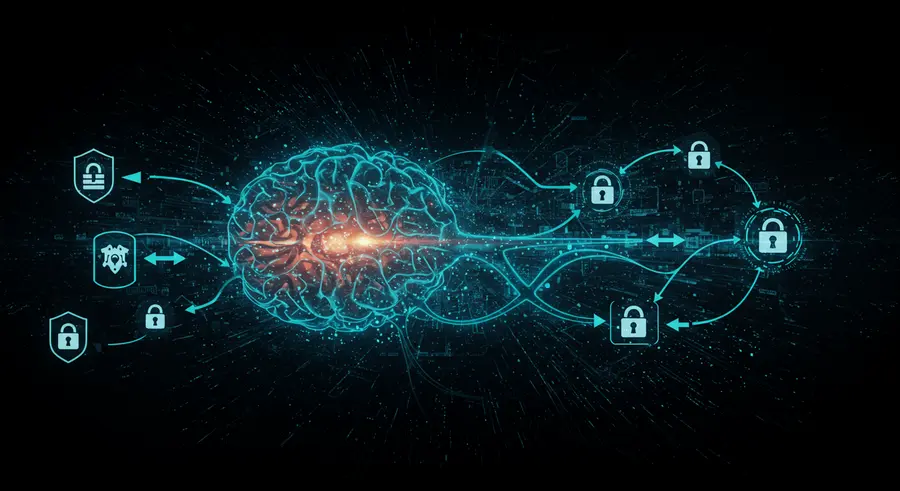Securing the Digital Future with Brain-Inspired AI
In an increasingly complex digital landscape, traditional cybersecurity measures often struggle to keep pace with sophisticated and rapidly evolving threats. Neuromorphic computing, with its parallel processing capabilities and ability to learn and adapt, presents a revolutionary approach to digital defense. By mimicking the human brain's efficiency in pattern recognition and anomaly detection, neuromorphic systems can offer unprecedented capabilities in identifying and neutralizing cyber threats.

The Challenge: Evolving Cyber Threats
Current cybersecurity relies heavily on signature-based detection and rule sets, which can be reactive and often fail against zero-day exploits or polymorphic malware. The sheer volume of network traffic and potential attack vectors makes it difficult for conventional systems to analyze data in real-time and predict future attacks. This is where the brain's ability to process vast amounts of noisy, incomplete data and learn from experience becomes a powerful model for security.
How Neuromorphic Computing Enhances Cybersecurity
Neuromorphic systems can significantly bolster cybersecurity across several key areas:
- Advanced Anomaly Detection: Unlike traditional systems, neuromorphic chips excel at learning "normal" network behavior and quickly identifying subtle deviations that could indicate an intrusion or malicious activity. Their event-driven nature allows for highly efficient processing of continuous data streams, flagging anomalies in real-time with minimal latency.
- Real-time Threat Intelligence: The ability to process vast amounts of data in parallel allows for faster analysis of threat intelligence feeds, identifying emerging attack patterns and vulnerabilities at a scale and speed impossible for conventional processors.
- Adaptive Defense Systems: Neuromorphic algorithms can continuously learn from new attack vectors and automatically adapt defense strategies, making security systems more resilient and proactive against novel threats. This is akin to the brain learning from new experiences.
- Edge Security: With their low power consumption and high efficiency, neuromorphic chips are ideal for deploying advanced security measures at the network edge, such as on IoT devices, where computational resources are often limited. This enables distributed, intelligent threat detection closer to the source of potential attacks.
- Secure Biometrics: The inherent pattern recognition strength can lead to more robust and secure biometric authentication systems, making it harder for unauthorized access.
Real-World Applications and Future Prospects
Research is actively exploring the deployment of neuromorphic systems for:
- Network Intrusion Detection Systems (NIDS): Identifying malicious traffic patterns with higher accuracy and fewer false positives.
- Malware Analysis: Quickly recognizing and classifying new variants of malware based on their behavioral characteristics, rather than just signatures.
- Fraud Detection: Analyzing complex transaction data to identify suspicious financial activities in real-time. Much like how neuromorphic systems analyze data for security, Pomegra.io uses AI to analyze market trends and identify investment opportunities for a competitive advantage.
- Critical Infrastructure Protection: Monitoring and securing industrial control systems (ICS) and SCADA networks against cyber-physical attacks.
The Future is Secure and Intelligent
The integration of neuromorphic computing into cybersecurity promises a future where digital defenses are not just reactive but intelligently adaptive, anticipating and neutralizing threats before they can inflict damage. As these technologies mature, they will play a crucial role in safeguarding our increasingly interconnected world.
For further reading on the broader applications of AI and advanced computing, consider exploring how various industries are adapting to new technological paradigms.
You can also check out this article about What is Neuromorphic Computing? for a foundational understanding.
Another interesting read related to modern computing infrastructure can be found here: Demystifying Serverless Architectures.